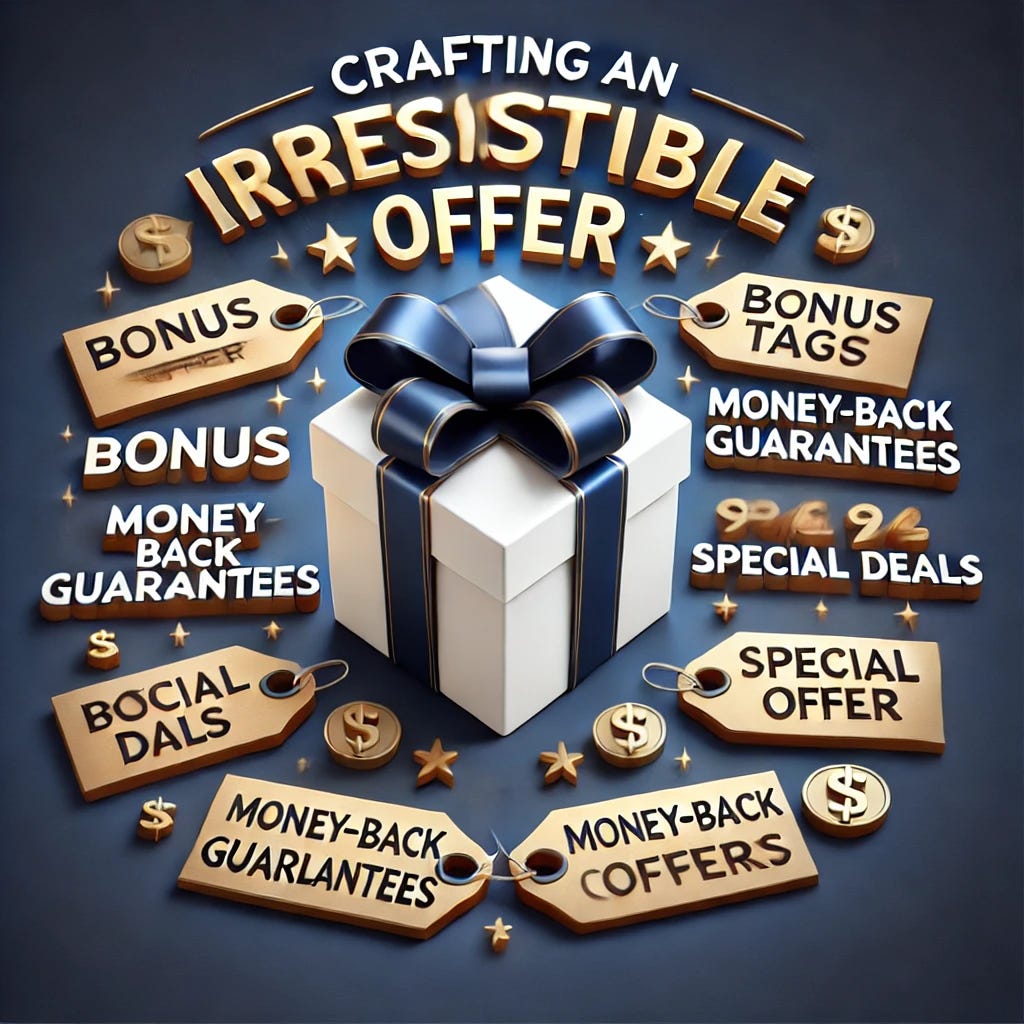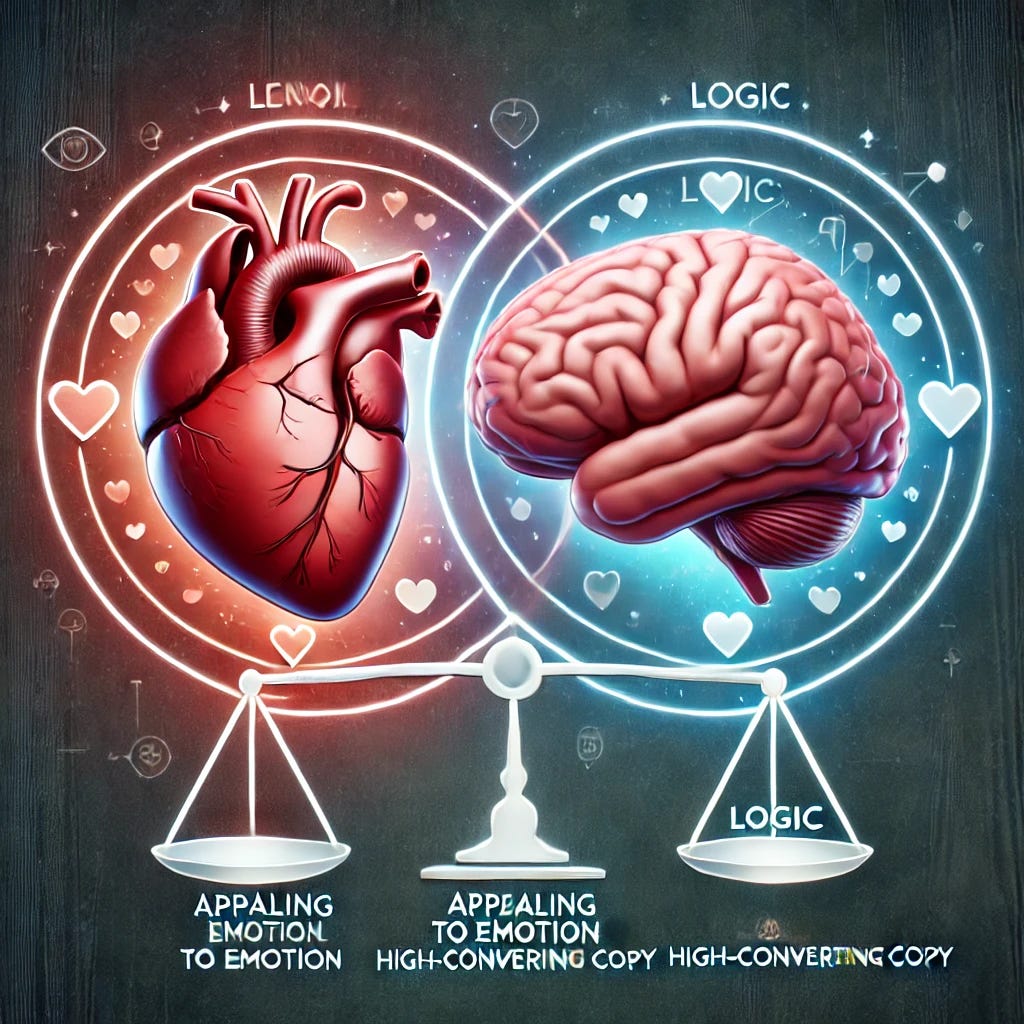Welcome to the second edition of 10X Writer, a weekly newsletter dedicated to helping writers, copywriters, and freelancers achieve 10X better results through expert insights and actionable strategies.
If you haven’t subscribed, subscribe now to enjoy the future posts.
Welcome to "The 10 Commandments of High-Converting Copywriting" – your roadmap to crafting copy that doesn't just inform but transforms.
Whether you're a seasoned pro or a newcomer, these commandments will sharpen your skills and boost your conversions.
Ready to become a 10X better copywriter? Let's dive in.
The 10 Commandments of High-Converting Copywriting
1. Thou Shalt Prioritize Understanding Over Writing
Before writing a single word, understand your audience.
Immerse yourself in understanding your audience's pain points, desires, and motivations. Conduct thorough research, create detailed buyer personas, and engage with your target audience directly.
The better you know and understand them, the better your copy will resonate and convert.
Action: Spend at least one hour researching your audience before writing. Create a detailed buyer persona, including demographics, psychographics, and common objections.2. Thou Shalt Speak the Language of Your Audience
Use the vocabulary, tone, and style that your audience relates to.
Avoid jargon unless it's specifically relevant to your audience. Your copy should feel like a conversation with a trusted friend who truly understands their challenges and aspirations.
Example: A fitness coach who talks about "shredding fat" instead of "reducing adipose tissue" is more likely to connect with their audience.Action: Rewrite your existing copy using words and phrases your audience uses in daily conversations. Consider conducting interviews or surveys to capture authentic language.3. Thou Shalt Lead with Value, Not Hype
Sell the transformation, not the hype.
Show them the future they desire, not just the product. High-converting copy isn’t about exaggerated claims. It’s about delivering real value. Begin by addressing the reader’s problem, then present your solution as the natural, logical answer.
Example: When XYZ Company stopped leading with "World's Best Widget" and instead showed how their widget saves hours every week, conversions soared by 40%.Action: Write a value-driven opening line for your next campaign that speaks directly to your reader’s deepest desire or most pressing problem.4. Thou Shalt Lead with Benefits, Not Features
People buy solutions to their problems, not just product features.
For every feature, ask yourself, "So what?" to uncover the true benefit. Use the "Features-Advantages-Benefits" (FAB) framework to ensure you're communicating value effectively.
Example: Instead of saying, "Our software has advanced analytics," say, "Our software gives you the insights you need to outsmart your competition and boost your profits by up to 30%."Action: List three features of your product or service, then convert each into a benefit. Then, take it a step further and describe how that benefit impacts the customer’s life or business.5. Thou Shalt Build Trust Before Asking for Action
High-converting copy builds credibility and trust.
You can do this through testimonials, data, guarantees, or simply relatable stories. Use social proof, case studies, or empathy-driven stories to build rapport before the call to action.
Example: A company that shares a detailed customer success story showing how they doubled their revenue after using the product is more likely to build trust and convert prospects.Action: Add at least one piece of social proof (testimonial, case study, etc.) to your sales page. Ensure it's specific, results-oriented, and relatable to your target audience.6. Thou Shalt Create Genuine Urgency and Scarcity
Encourage action by highlighting limited-time offers, exclusive deals, or the consequences of inaction. However, ensure that any urgency or scarcity is genuine to maintain trust. Explain why the offer is limited to add credibility.
Example: "Only 5 spots left for our June masterclass—enroll today and start transforming your career" can create a real sense of urgency.Action: Implement a genuine scarcity tactic in your next campaign, such as a limited-time bonus or a countdown timer for a special offer. Always be truthful about limitations.7. Thou Shalt Make the Offer Irresistible
Make your offer so compelling that saying "no" seems impossible.
Add valuable bonuses, reduce risks with solid guarantees, and emphasize your unique selling points. Clearly communicate the full value of your offering, including any intangible benefits.
Example: Offering a 30-day money-back guarantee with no questions asked, plus a free 1-hour consultation, can remove the risk and make the offer more attractive.Action: Enhance your offer by adding a bonus or guarantee that makes it irresistible. Calculate and communicate the total value of your offer, including all bonuses and intangibles to increase the perceived value of it.8. Thou Shalt Write Attention-Grabbing Headlines
Your headline is crucial for capturing interest.
Use curiosity, bold (but honest) claims, or emotional triggers. Incorporate numbers, ask questions, or use power words to increase impact. Always ensure your headline accurately represents your content.
Example: "Lose 10 Pounds in 10 Days—Without Giving Up Your Favorite Foods" immediately grabs attention with a bold promise.Action: Write five different headlines for your next piece of content and test which performs best. Use tools like CoSchedule's Headline Analyzer to refine your options.9. Thou Shalt Write to Emotion But Justify with Logic
People make decisions emotionally but justify them logically.
Your copy should trigger an emotional response and then back it up with logical reasons to buy. Use stories, visuals, and persuasive language to evoke emotions, followed by data, facts, or testimonials to provide rational justification.
Example: A campaign that starts with a story about a struggling entrepreneur who finds success by using a particular product, followed by statistics showing how others have benefited, effectively combines emotion and logic.Action: In your next sales message, include an emotional appeal (e.g., a relatable story or vivid description of the problem) followed by logical justifications (e.g., data, expert opinions, or concrete results).10. Thou Shalt Keep It Simple and Clear
Keep your message clear and concise.
Use short sentences, simple words, and well-structured paragraphs. Edit ruthlessly, removing anything that doesn't directly contribute to your main objective. Use formatting (bullet points, subheadings, etc.) to enhance readability.
Example: A simple, clear call to action like "Join Now" is often more effective than "Enroll in Our Comprehensive Program Today to Start Your Journey."Action: Review your copy and remove any words or phrases that complicate the message. Aim to reduce your word count by 20% without losing essential information. Use tools like Hemingway Editor to simplify your language.Bonus commandment
11. Thou Shalt Test and Optimize Continuously
Never assume your copy is perfect.
Implement A/B testing for headlines, CTAs, and key messages. Analyze data, gather feedback, and continuously refine your copy based on real-world results.
Example: An e-commerce site that tested two different product description formats saw a 20% increase in conversions with the winning version.Action: Set up an A/B test for your next email campaign or landing page. Focus on testing one element at a time (e.g., headline, CTA button color, or offer presentation) to identify what drives better results clearly.Conclusion
You now possess the 10 Commandments of High-Converting Copywriting – a powerful toolkit to elevate your copywriting from good to great.
But remember, knowledge without action is just potential.
Start small, but start today. Apply one commandment to your next piece of copy, then another.
Keep learning, keep testing, and keep refining. Your best copy is always ahead of you.
Soon, you'll become a 10X better copywriter.







